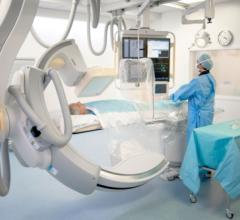If you enjoy this content, please share it with a colleague
Philips
RELATED CONTENT
DAIC Editor Dave Fornell highlights some of the biggest trends and most innovative technology discussed during the ...
Philips Healthcare has received 510(k) clearance from the U.S. Food and Drug Administration (FDA) to market its AlluraClarity live image guidance system in the United States.
This is a brief overview of the newest software systems available on the treatment planning systems market.
With all of the major X-ray vendors now offering wireless digital radiography (DR) systems, prices have dropped and it is becoming an industry standard for digital X-ray room replacements, primarily for computed radiography (CR) systems.
Royal Philips and Georgia Regents Medical Center (GRMC), Georgia’s public academic health center renowned for its top-ranked doctors,announced a 15-year alliance to enable increasingly patient-centered approaches to care and to create an innovative business model that addresses current and future clinical, operational and equipment needs of GRMC’s multiple sites.
More than 54 companies will display their latest products and services at the American Society of Echocardiography’s (ASE) 24th Annual Scientific Sessions, planned for June 29-July 2 at the Minneapolis Convention Center in Minneapolis, Minn. This year, the conference theme is “a disease-based focus on the role of echocardiography in diagnosis and guiding therapy”.
The Philips 24-inch and 27-inch clinical review displays ensure that medical images are shown consistently with high quality to achieve reliable interpretations. The displays with clinical D-image preset are factory calibrated to give digital imaging and communications in medicine (DICOM) part 14 compatible grayscale standard display performance. By using high quality LCD panels with LED technology, Philips offers consistent and reliable performance at an affordable price point.
Radiation exposure from multidetector computed tomography (CT) has become a pressing public health concern in both lay and medical publications. Implementation of iterative reconstruction offers the ability to minimize radiation exposure while preserving and, in some cases, improving image quality. However, in order to evaluate iterative reconstruction software, one must first understand the basics of how it works.
Advanced visualization software continues to make surgical planning more efficient and accurate as technology advances. Surgeons can map out procedures based on images from computed tomography (CT), magnetic resonance imaging (MRI) and positron emission tomography (PET) exams, among other types of digital imaging and communications in medicine (DICOM) modalities. The images allow physicians to see areas of interest from multiple angles, and isolate various structures, organs and vessels that are of interest in a matter of minutes. This advancement in technology has increased physician interaction and provided an opportunity for enhanced patient education that was not previously available.
The phrase “doing more with less” is becoming more prevalent in tightening economic environments, and the operating room (OR) is one example of where hospitals are looking to maximize savings. Mobile C-arm units are important for maximizing space in the OR and can provide the image quality needed to visualize anatomy and devices during complex surgical procedures. The latest advances in mobile C-arms aim to provide users with the flexibility and ergonomics that can support accomplishing more in the OR with less.

 July 15, 2013
July 15, 2013 





